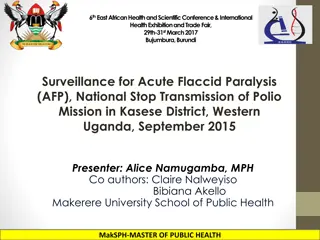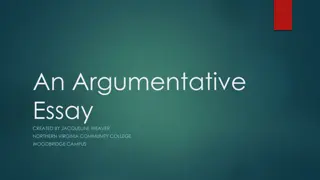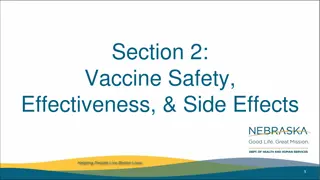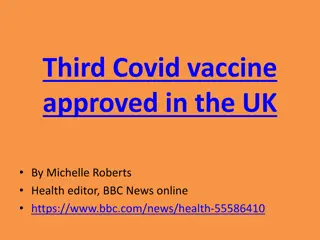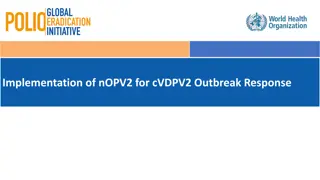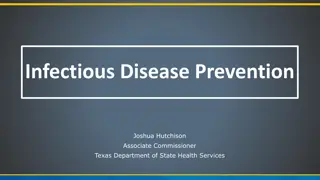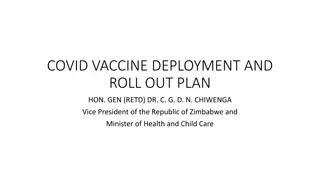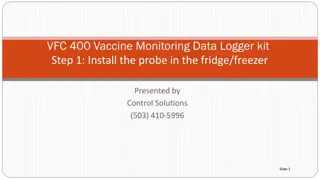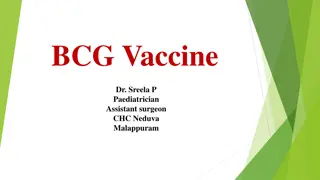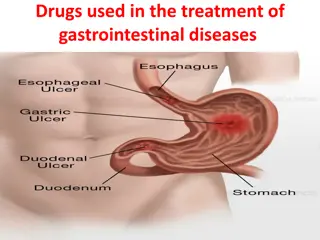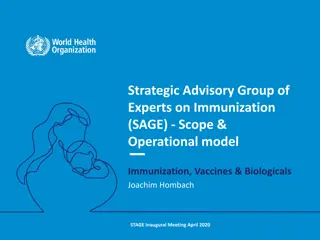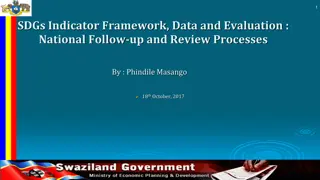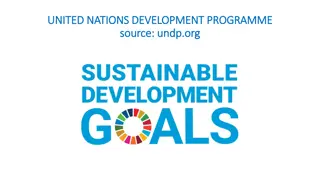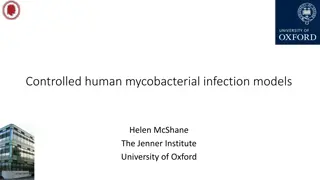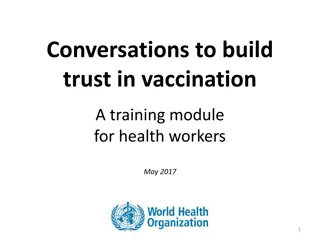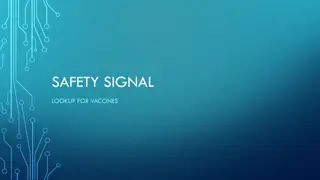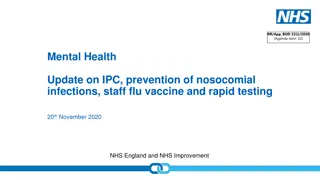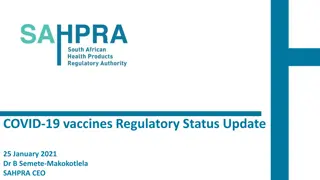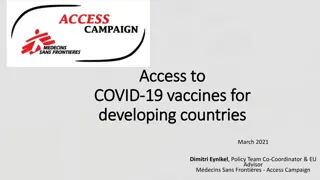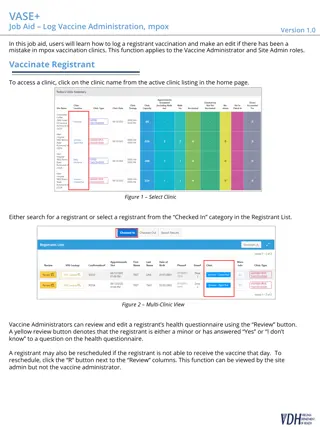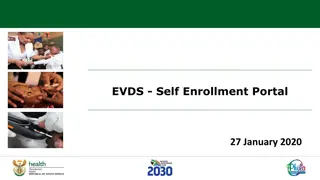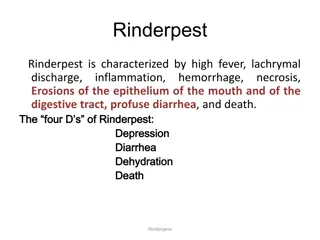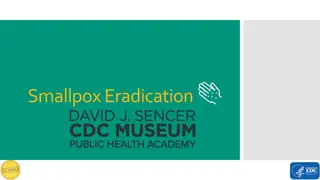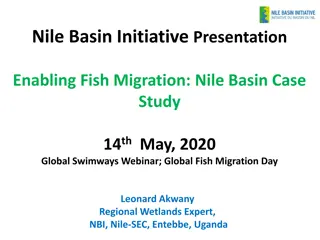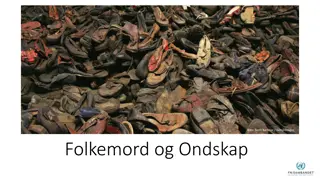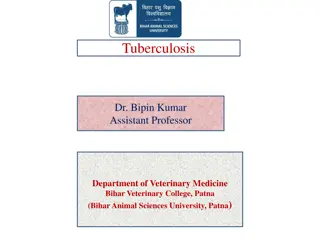Understanding Polio Eradication Efforts and Vaccine Development
Polio, a disabling disease caused by the poliovirus, mainly affects children and can lead to paralysis. Efforts to eradicate polio include the development of vaccines like the Inactivated Polio Vaccine (IPV) and Oral Polio Vaccine (OPV). The poliovirus' choice of host, ease of transmission, and impact on children drive the public's interest in stopping its spread. Skills required to combat polio include vaccine development, public health education, and epidemic response. Safety incidents, like the Cutter Laboratories case in 1955, have led to improved vaccine regulations.
Download Presentation

Please find below an Image/Link to download the presentation.
The content on the website is provided AS IS for your information and personal use only. It may not be sold, licensed, or shared on other websites without obtaining consent from the author. Download presentation by click this link. If you encounter any issues during the download, it is possible that the publisher has removed the file from their server.
E N D
Presentation Transcript
Polio Eradication A picture containing text, sign Description automatically generated
a substance used to stimulate the production of antibodies and provide immunity against disease Word Bank endemic the reduction to zero of an infectious disease's presence in the global host population vaccine type of microbe that causes infectious diseases; has a core of genetic material but no way to reproduce on its own paralysis eradication the regular presence of a disease or infectious agent in a population virus the loss of the ability to move (and sometimes to feel anything) part or most of the body; caused by illness, poison, or injury
Polio (aka poliomyelitis) is: a disabling and life-threatening disease caused by the poliovirus Polio can be spread through: Contact with the feces (poop) of an infected person Droplets from a sneeze or cough of an infected person People who are infected even without symptoms Understanding Polio Symptoms of Infection: 1 out of 4: flu-like symptoms (sore throat, fever) 1 out of 25: meningitis infection of brain or spinal cord 1 out of 200: paralysis/weakness in arms, legs, or both
1. How does the polioviruss choice of host make it an easy target for eradication? 2. What jobs and skills would be needed to stop a disease Think About It from spreading? 3. Polio mainly affects children. How does that affect the public s interest in stopping the spread of the poliovirus?
Inactivated polio vaccine (IPV) Developed by Jonas Salk in 1950s Uses killed poliovirus Given through injection U.S. only uses IPV for safety reasons Polio and CDC Oral polio vaccine (OPV) Developed by Albert Sabin in 1960 Uses weakened live virus Given as drops in the mouth OPV preferred in places where administration is difficult, particularly remote places
In 1955, CDC Epidemic Intelligence Service (EIS) Officers responded to an incident at Cutter Laboratories where 40,000 children being accidentally injected with live poliovirus 260 children were paralyzed 10 children were killed Led to increased vaccine safety regulations Polio and CDC CDC partnering with other agencies through Global Polio Eradication Initiative (GPEI) to eradicate polio globally Cases of polio down over 99% globally Last endemic case in U.S. was in 1979 Polio only endemic in Pakistan and Afghanistan
1. Why might people be reluctant to be vaccinated? 2. How many years have passed since the disease was Think About It endemic in the U.S.? 3. How does vaccination help limit the spread of polio?
From the Expert https://youtu.be/uPGhmLzUGec
1. What role does global politics play in public health? 2. Explain the important role communication plays in Think About It vaccination initiatives. 3. How can your efforts support the efforts of CDC and GPEI?
Call to Action! 1. Design and build a polio vaccine carrier. 2. Test your prototype. 3. Share your designs. Give it a Try Why do you think participation is important?
Define Define the problem Research Do background research Requirements Specify requirements Use the Engineering Design Process Brainstorm Develop solutions Build Build a prototype Test Test and redesign Share Communicate results
1. Design and Build the Vaccine Carrier - Design a vaccine cooler that can maintain temperature between 35-46 F (2-8 C) - Build a prototype of your design Give it a Try
2. Test the Vaccine Carrier - Add a frozen substance to your vaccine carrier and monitor temperature over time - Graph your results - Suggest improvements for design Give it a Try
3. Share Your Findings - Instagram @CDCmuseum Give it a Try


